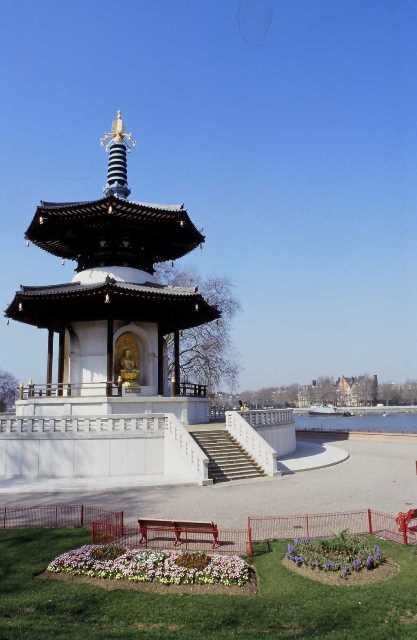Battersea Park Retains Its Green Flag
And is described as “the jewel in the crown of London's parks”
Battersea Park has again been confirmed as one of the best green open spaces in the country after successfully retaining its coveted Green Flag award.Described as “the jewel in the crown of London's parks”, the award from leading environmental charity Keep Britain Tidy recognises and rewards the best parks and green spaces across the country.
A Green Flag is a sign to visitors that Battersea Park “boasts the highest possible standards, is beautifully maintained and has excellent facilities”.
The awards are judged by open space experts, who volunteer their time to assess candidates against eight strict criteria, including horticultural standards, cleanliness, sustainability and community involvement.
Wandsworth’s environment spokesman Cllr Jonathan Cook said: “Battersea Park truly is one of London’s most popular and attractive open spaces. No other park in the capital offers so much to see, do and enjoy.”
Green Flag Award scheme manager Paul Todd said: ““We are delighted to be celebrating another record-breaking year for the Green Flag Award scheme. All the flags flying this year are a testament to the efforts of the thousands of men and women, both staff and volunteers, who work tirelessly to maintain the high standards demanded by the Green Flag Award.”

Above: the Buddhist Peace Pagoda
Battersea Park’s attractions include a boating lake, sports courts, an Olympic quality running track, bike hire, a popular children's zoo, lakeside restaurant, Victorian bandstand, tennis courts, all weather floodlit sports pitches and an impressive peace pagoda - a unique London landmark complete with gold-coloured Buddhas overlooking the River Thames.
The 200 acre space was opened by Queen Victoria in March 1858 having been created out of fields and marshland to create a place of healthy recreation for the huge numbers of people who had moved to London during the Industrial Revolution.
It was designed by the Victorian engineer James Pennethorne and the planting was overseen by the adventurer John Gibson, who scoured the the globe for exotic plants to display in the park's famous sub-tropical garden, the first of its kind to open to the British public.
Throughout the 20th century, much of the original horticultural diversity was lost, largely due to the impact of two world wars when the park was not only used for allotments and pig farming, but also for troop dispersal areas, bomb shelters and anti-aircraft gun emplacements. The park also suffered extensive bomb damage from Luftwaffe bombers on missions to disable neighbouring Battersea Power Station, as well as being hit towards the end of the war by a V1 rocket.
In 1951 the park was chosen as the home for the Festival of Britain Pleasure Gardens, designed by Russell Page. A permanent funfair was also included, which for many years proved enormously popular with people of all ages, but which eventually closed in 1974.
Under the stewardship of the Greater London Council, the park became fairly rundown in the 1970s and 80s and it was eventually taken over by Wandsworth borough in 1986 when the GLC was abolished.
For more information about the park and its attractions visit www.wandsworth.gov.uk/batterseapark
August 3, 2015